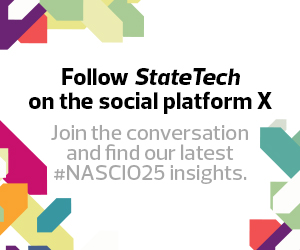Enterprise Architecture Guides Workplace Efficiency
Clark emphasized that the Michigan Department of Technology, Management and Budget vets solutions for consistency with the state’s enterprise architecture standards.
“And we’ve worked with our service owners or the platform owners to actually do the security assessment and review against our risk policies and requirements based on enterprise architecture,” she said. “If somebody is looking to deliver something faster and they use one of those prevetted solutions, then they can actually adhere to the controls. The process for the security evaluation is quicker.”
Such arrangements reduce the burden on staff and optimize licensing costs while maintaining a standard footprint, she said. When possible, using fewer tools to do the same job will result in greater efficiency and deeper expertise in those solutions.
“Just because something can technically do the job and meet the business need doesn’t mean it’s necessarily the right choice in the context of the other products that are already in place,” Clark said.
In Michigan, an IT enterprise architecture team designs a roadmap and facilitates support of it, she said.
“We can look at things before purchase,” Clark said. “We work with our procurement team.” Together, they assess purchase proposals against the existing IT environment to see if something already exists that can meet the need.
“It also speeds up the amount of time required for us to deploy things in our environment ... and potentially yields costs savings for us,” Clark said.
Click the banner below to explore how digital transformation can improve citizen services.













